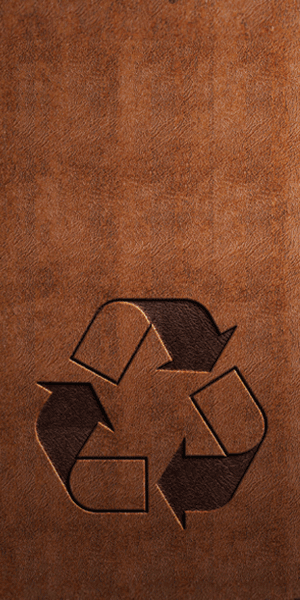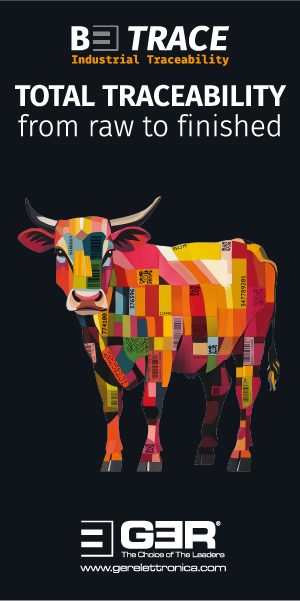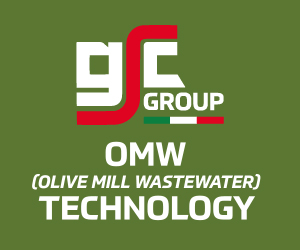Market Intelligence—13.12.22
Macroeconomics
In our last issue, after widespread demonstrations in China, we discussed the possibility of changes to the covid-19 policy in China. We pointed out that this would only happen for the sake of saving face and that this would hardly be possible very quickly. How wrong we were. Within the last 14 days, the Chinese government has made an almost complete 180-degree turn in its policy and lifted many restrictions. Obviously, Beijing also sensed that people’s patience was running out and that the first demonstrations and riots could be the start of something bigger. The bizarre way in which governments sometimes want to preserve their reputation could be seen in suggestions of a name-change for the virus. Even the discussion that the virus is suddenly no longer so aggressive and dangerous seems very creative.
The next few weeks will show how the provinces and metropolises cope with the implementation, as the responsibility remains a risk in their hands. A larger number of infections would still be the lesser problem as long as this are not accompanied by increases in hospitalisation rates, severe cases or a sharp rise in the number of fatalities. The initial reaction of the population is still marked by fear and uncertainty, while the economy and the stock markets welcome the easing.
The Russian military’s continued airstrikes on exclusively civilian infrastructure targets in Ukraine suggest incredible cynicism. In addition to the suffering of the population, the obvious intention to put pressure on the west by increasing the number of refugees this winter is very clear. However, there are indications that a negotiated solution might be possible. At the moment we still lack real belief in genuine Russian interest in such a solution.
In Europe, all eyes are on Brussels where a possible corruption scandal could further shake confidence in the EU administration. If the accusations are confirmed, this would be grist to the EU critics’ mill.
On the financial markets, the focus continues to be on inflation. Even though the base effects are beginning to take effect and energy prices are falling, the markets are not yet convinced that the national banks will change their interest rate policy in the short term.
Oil prices are falling, which is good news overall. The oil price cap on Russian oil has side effects. Since there is currently no real shortage of oil, it deprives the OPEC group of an important trump card to stabilise prices by cutting volumes.
However, the markets are very sensitive and it remains to be seen whether OPEC will react to the development with deeper production cuts. Without a corresponding and strong cut in production, a further drop in prices towards $60 per barrel would not be surprising and would then also dampen the inflation risks and have positive effects on the global economy. Of course, the oil-producing countries see things somewhat differently.
The US dollar continues to weaken and the gold price could recover somewhat towards $1,800 per ounce.
Leather Pipeline
It is harder to get a clear view of the leather pipeline at the moment than in normal times. In many countries, the end of the year is also the end of the financial year. As we all know, companies in the western world are nowadays run almost exclusively according to plans, budgets and targets. Achieving the goals is the supreme doctrine. The bigger the company, the more important these targets are. At the same time, this means that by the end of December, business decisions are often subordinated to these targets, often even against better judgement and logic in the leather business.
One cannot help thinking that this also played a major role along the leather pipeline in 2022.
Looking at the course of the year, there is much to suggest that decisions about production were based more on the planned figures than on the realities.
With the end of the year, decisions for the coming year take precedence. If one looks at the contents of the publicly available annual or quarterly reports, it quickly becomes apparent that at many levels along the leather pipeline, companies are complaining about high inventories. The usual reaction is then to make appropriate decisions as quickly as possible. At the moment, these decisions can only mean reducing production and selling stocks aggressively until the desired levels are reached.
In Europe this is already being felt. Taking into account the exceptions that always apply, we are receiving information to this effect from most of our sources. For some weeks now, there has been more and more talk about the fact that, on the one hand, production is already being cut back. On the other hand, the Christmas holidays are being extended and many market participants are complaining at the moment that their customers are not providing any foresight or planning for the start of the new year. If we consider that we are already in mid-December and thus only a few days away from closing for the Christmas holidays, this is an extremely difficult situation.
If you ask, you usually get the answer at every level that they are not yet clear about clients’ orders and are waiting for decisions. This then runs like a red thread from retail down to raw materials across all production levels. Enquiries with the chemical industry confirm this impression. In the chemical industry, too, one usually gets the answer that orders have been slowing down since September and that no reliable planning for the first quarter has been made available. There are no significant answers from raw material suppliers either.
This leaves only the Indian sub-continent and some other parts of Asia as regions that could possibly escape this trend. Optimists can construct a possible recovery for China and the period after the Chinese New Year (January 25). If the relaxation of the Chinese pandemic policy actually takes place and reaches all provinces and regions accordingly, then both transport and production should slowly recover. However, this would require a fundamentally positive market assessment by manufacturers in China. In the case of the leather industry, it may already be too late for the current season. Whether local demand in China suddenly improves and this leads to orders that can be delivered quickly will continue to depend on politics in China. We know that producers in China are extremely sensitive to political decisions.
From the Indian sub-continent there was satisfactory news up until the end of October. Many shoe manufacturers in particular reported significantly improved orders, especially for higher-quality formal shoe types. Plans and programmes were made that already extended into the coming year, which also left the impression that they could profit from the declines and the migration of production from China.
In the last few weeks, however, the mood there has cooled down noticeably and in discussions with leather and shoe producers we were told that they are waiting for new orders, announced a long time ago, to be placed.
In Europe, in addition to the very sluggish furniture business, the situation in the automotive industry is a particular cause for concern. The current situation is hard to understand. On the one hand, the premium manufacturers are publishing excellent business results with record profits, focusing more and more on their premium models and declaring that the problems in the supply chains, especially with computer chips, have decreased considerably. Under these conditions, one should actually expect at least stable, if not increasing, demand for automotive leather. However, the opposite is the case at the moment and we don’t know any of the big names that don’t have below-average production plans for the next two months.
Even if it substantiates our thesis, expressed months ago, that a relaxation in the supply chains does not necessarily lead to an increase in leather demand, because at no time had the car manufacturers really significantly curtailed their production of high-end premium cars, sluggish production and demand at the present time are, nevertheless, surprising. The tanneries are complaining about the massive imbalance in the acceptance of different-quality grades. While the very high quality ranges, as always, are not a problem, the acceptance of other types has been reduced and stocks continue to rise. In the meantime inventory is piling up, adding to the great burden that we had already reported in previous issues.
In summary, there is very little left to report at the moment other than a very subdued mood for the last weeks of the year and, at least for the moment, no great optimism for a positive start to 2023. There is still some time, but there is a lack of imagination at the moment to be able to identify the trigger for a sudden improvement.
What worries us most about the coming year is the fact that we simply cannot see a resurgence in the use of leather as a material anywhere. This then leaves the question of what to do with the raw material available and with the high global capacity in leather production.
In almost all cases, manufacturers of consumer goods can switch to alternative materials, so a recovery in consumption does not mean a simultaneous recovery in demand for leather.
If one takes into account that most of the big brands operate globally, it cannot be assumed that they want to differentiate between sales regions. In Europe, the campaigns against leather, which in the end is only a campaign against meat, are catching people’s imagination, especially among younger consumers. This will not increase the demand for leather without an external impulse. In other regions of the world, the situation is certainly quite different, but ultimately consumers can only buy what is offered to them.
As long as the global suppliers of consumer goods such as shoes and furniture, but also cars and leathergoods, orient their marketing and manufacturing monoculturally, it is unlikely that people would be willing to plan regionally different material use. In addition, of course, there may be no reservations about leather as a material in Asia and America, but only in very few cases does one insist on leather. Cowboy boots and the saddle on the horse are hardly imaginable in a plastic version.
Under these conditions and under the assumption that stocks along the supply chain are to be reduced first, we will probably have to wait a while for the market situation to recover. Before inventories are rebuilt and confidence in consumption and sales figures can be restored, we must assume a period of at least three, and perhaps six months. Only in China do we see any realistic chance of a quicker change in the situation. In addition to the negative outlook in the consumer goods markets, the planning uncertainty regarding costs for companies should not go unmentioned. Even though the energy market seems to be calming down, the outlook and the geopolitical situation are still anything but stable, making long-term cost planning and pricing extremely difficult, not to say impossible. These are all conditions that are very stressful for long supply chains in our globalised world. This is especially true for the sometimes extremely long supply chains and time frames that are often encountered in the leather pipeline. The classic with raw material from the American continent, production in Asia and sales in Europe simply does not fit into an unstable and rapidly changing environment.
In the split market, at least in Europe, there is a growing sense of unease about the supply of raw materials. This is of course due to the uncertain environment and the subdued production expectations in the leather industry. Almost daily, the possibilities of using hides directly to obtain raw materials for collagen and gelatine are again being examined and discussed. It is not as simple as many people imagine and apart from the question of price, yield and quantity of raw material available, there is also the question of whether production capacity can be made available in the longer term at acceptable prices.
Just because some tanneries have temporarily made themselves available for such production does not mean that they will be willing and able to do so on a secure basis at reasonable cost in the long term. In this area, we are certainly still much more at the beginning of an examination process than some might imagine.
For sheepskin products, we find no news or information suggesting any changes. In this market, too, lockdowns in China have weighed heavily on demand. Specialities and high-value products, especially for the luxury goods industry, continue to be exempt. For all other supply chains and sectors, business remains troublesome, with a similarly burdened market as we have already described above. Without a massive recovery in the consumer goods markets and a reduction of inventories along the supply chain, things will not change for the better any time soon here either.
For the next few weeks and for the period until mid-January, we do not expect any change in the general situation along the leather pipeline. The next few weeks will certainly be used in many companies to get a clear picture of the situation and to make some decisions for next year. Much will then depend on whether people continue to believe in the usual cycle and thus in the fact that every crisis in this industry is followed by an upswing.
In principle, of course, this is always true and fundamentally it will happen this time as well. However, in our view, the factors in the equation have changed. In particular, price no longer influences demand to the same extent that it used to.
Those who have less confidence in a quick and strong recovery will also have to deal with the resulting consequences and decisions. There would then be no continuation of the status quo and no continuation of history. New ideas and creativity are needed so that quick and successful solutions can be found in our sector.












